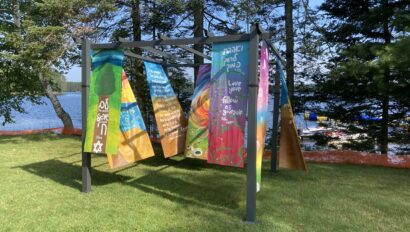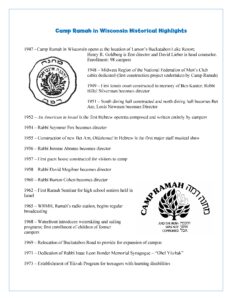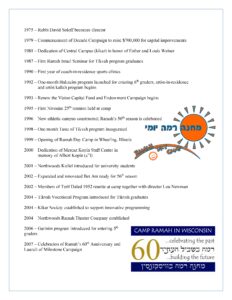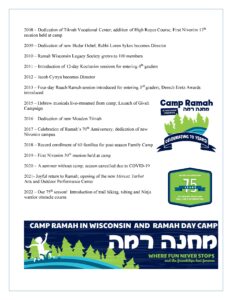Please enjoy a d’var Torah this week from Jon Adam Ross (JAR). Jon is a founding artist of The In[HEIR]itance Project, a national arts organization that creates space for communities to navigate challenging civic conversations through collaborative theater projects inspired by inherited texts, cultures, histories, traditions, customs, and beliefs.. Jon has spent nearly 20 years making art with communities around the country as an actor, playwright, and teaching artist. Jon has served as an artist in residence at Union Theological Seminary, The Jewish Theological Seminary of America, and many other religious and educational institutions. He was a Spielberg Fellow in Jewish Theater Education with the Foundation for Jewish Camp and received a Fellowship from the Covenant Foundation to create The In[HEIR]itance Project in 2015. As an actor, Jon has performed in over 90 cities around the globe. His stage credits include: a dog, a 2,000-year-old bird, an elderly orthodox Jew, a spurned housewife, a horse, a British naval officer in 1700s Jamaica, a goat, Jesus Christ, a lawyer, a wrestler, a hapless police chief, and a cyclops. Jon holds a BFA in Acting from NYU/Tisch.
Art is Necessary: Reflections on Parashat Vayakhel-Pikudei
by Jon Adam Ross
God gets it. And so did Moses. Do we? I remember a conversation with a friend at camp many summers ago about the role of artists in society. We were digging deep into the reasons why some societies (see: England, France) deem subsidization for artists a fundamental pillar of good governance while others (see: the United States) presume artists are perfectly fine fending for themselves in a capitalist society that ascribes quantitative value on what someone will pay for a piece of art, a Broadway ticket, etc., rather than qualitative value on the impact the art could have on a community. Too often art and artists are forgotten in the bailouts and the infrastructure investments. Artists are seen as vain and frivolous; art as a hobby or a luxury. That perspective is dead wrong. God gets it. And so did Moses. Let’s dig in:
In helping Jeremiah understand how God sees the work of building a just world, God tells Jeremiah to visit the Beit Hayotzer (the potter’s studio) and to look to the artists:
הַדָּבָר֙ אֲשֶׁ֣ר הָיָ֣ה אֶֽל־יִרְמְיָ֔הוּ מֵאֵ֥ת יְהוָ֖ה לֵאמֹֽר׃ ק֥וּם וְיָרַדְתָּ֖ בֵּ֣ית הַיּוֹצֵ֑ר וְשָׁ֖מָּה אַשְׁמִֽיעֲךָ֥ אֶת־דְּבָרָֽי׃ וָאֵרֵ֖ד בֵּ֣ית הַיּוֹצֵ֑ר והנהו [וְהִנֵּה־] [ה֛וּא] עֹשֶׂ֥ה מְלָאכָ֖ה עַל־הָאָבְנָֽיִם׃ וְנִשְׁחַ֣ת הַכְּלִ֗י אֲשֶׁ֨ר ה֥וּא עֹשֶׂ֛ה בַּחֹ֖מֶר בְּיַ֣ד הַיּוֹצֵ֑ר וְשָׁ֗ב וַֽיַּעֲשֵׂ֙הוּ֙ כְּלִ֣י אַחֵ֔ר כַּאֲשֶׁ֥ר יָשַׁ֛ר בְּעֵינֵ֥י הַיּוֹצֵ֖ר לַעֲשֽׂוֹת׃
(1) The word which came to Jeremiah from Adonai: (2) “Go down to the house of a potter, and there I will enable you to hear my words.” (3) So I went down to the house of a potter, and found him working at the wheel. (4) And if the vessel he was making got ruined, as happens to clay in the potter’s hands, he would go back and make it into another vessel, such as the potter saw fit to make. (Jeremiah 18:1-4)
God understood that artists are necessary for a healthy society to flourish. And Moses understood that ART is necessary, also. Not just art for consumption, though there is an airtight argument to be made that without art (cave paintings depicting hunting strategy, storytelling that most effectively delivers lessons of morality with meaning, music that elevates our spirits, to name a few) we’d be worse off. Moses understood that artistic process as a tool for community building is crucial to the work of establishing bonds of cooperation and collectivism necessary for surviving the wilderness and establishing a new nation out of disparate tribes.
And that brings us to this week’s parashah. The second most famous construction project in the Torah (nod to Noah) is described in great detail in Vayakhel-Pikudei. The fabrics, the materials, the architecture and design, it’s all there. And the artists, of course, are important enough to be named. Betzalel and Oholiav lead the process with their talent and skill. But something unique happens in this pursuit of a beautiful new mobile home: the community is invited to help! Every single soul is invited to participate in the building of the mishkan by contributing their own flourish. A scarf here, a bangle earring there. And it all goes into the making of the tabernacle. This seems somewhat unnecessary. Surely the project could have just happened with Moses commandeering the materials that Betzalel and Oholiav needed and a crew could’ve built it. But by doing it this way, by inviting everyone to participate in the artistic process, it gave the entire community ownership of what was being built, and by proxy, ownership and agency in the relationship the community (and each individual) has with God. Co-creating art brings the Israelites closer to God. How amazing is that?!?!
Even more so, and I speak from personal experience, co-creating art brings people closer TO EACH OTHER. It’s a key reason why eidot at camp mount musicals every summer. It’s why we invested in a new Omanut/Nagarut (Art and Woodworking) facility, our own Beit HaYotzer, right in the middle of camp! And it’s why I’ve dedicated my life to utilizing shared artistic practice as a tool for forging relationships in communities that are navigating challenging civic conversations. It’s also why the National Guard in Texas is turning to local artists like my friend Luis Ordaz Gutiérrez to help them navigate the distribution of aid. Artists know the stories and the people and the identity of their communities. Artists know how to shape a just society. And you can join us in that work, as Betzalel and Oholiav’s invitation teaches us. Just come by for a visit. We’ll be in the Beit HaYotzer.







